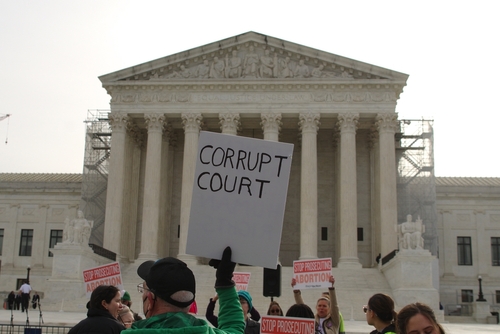The U.S. Supreme Court has issued a landmark ruling, overturning the long-standing Chevron doctrine, a precedent that has significantly shaped administrative law for nearly four decades. The 6-3 decision marks a pivotal shift in the balance of power between federal agencies and the judiciary, curtailing the deference courts must give to agency interpretations of ambiguous statutes.
The Chevron doctrine, established in Chevron U.S.A., Inc. v. Natural Resources Defense Council, Inc. (1984), mandated that courts defer to reasonable agency interpretations of ambiguous laws enacted by Congress. However, the current conservative-majority Supreme Court has expressed increasing skepticism towards this doctrine, culminating in the decision to overturn it. The ruling emerged from the case Loper Bright Enterprises v. Raimondo, which questioned the authority of the Commerce Department to require fishing operations to pay for federal monitors on their boats.
Today, a few underdog fishermen just took down the administrative state. In October, I was in a car in New Hampshire when I expressed hope for the Supreme Court overturning the Chevron Doctrine. Today, it finally happened. pic.twitter.com/vtZTIYdmy5
— Vivek Ramaswamy (@VivekGRamaswamy) June 28, 2024
Overturning Chevron will have profound implications across various sectors, particularly affecting environmental and public health regulations. Agencies like the Environmental Protection Agency (EPA) will now face greater challenges in implementing regulations to address issues such as climate change and pollution control.
The ruling complicates the Biden administration's efforts to use regulatory measures to curb carbon emissions from the electricity and transportation sectors, which are the largest sources of pollution in the United States.
https://twitter.com/search?q=chevron&src=typed_query
The decision has sparked a robust debate among the justices and legal scholars about the appropriate balance of power between the legislative, executive, and judicial branches. Justice Neil Gorsuch, a long-time critic of Chevron, argued that the doctrine allowed for unwarranted executive overreach, undermining the judiciary's role in interpreting the law. Conversely, Justices Elena Kagan and Sonia Sotomayor defended Chevron, emphasizing that agencies possess the necessary expertise and accountability to make policy decisions on complex regulatory issues.
One of the immediate consequences of this ruling is the anticipated increase in litigation. By removing the Chevron deference, courts are now the primary arbiters of statutory interpretation, which is expected to lead to a surge in legal challenges against federal regulations. This shift places significant interpretative power in the hands of unelected judges, potentially leading to inconsistent and fragmented legal precedents across different jurisdictions.
The business community's response to the ruling is mixed. While some conservative factions welcome the rollback of regulatory power, believing it will reduce burdensome regulations, others express concern about the resulting legal uncertainty. Environmental advocates worry that this decision will hinder the government's ability to respond effectively to emerging environmental challenges, as agencies will struggle to adapt regulations to new scientific and technological developments.
The Supreme Court's decision to discard the Chevron doctrine represents a seismic shift in administrative law, fundamentally altering how federal regulations will be interpreted and enforced. As agencies grapple with this new legal landscape, the ruling is poised to reshape the interaction between regulatory bodies, the judiciary, and Congress for years to come.




